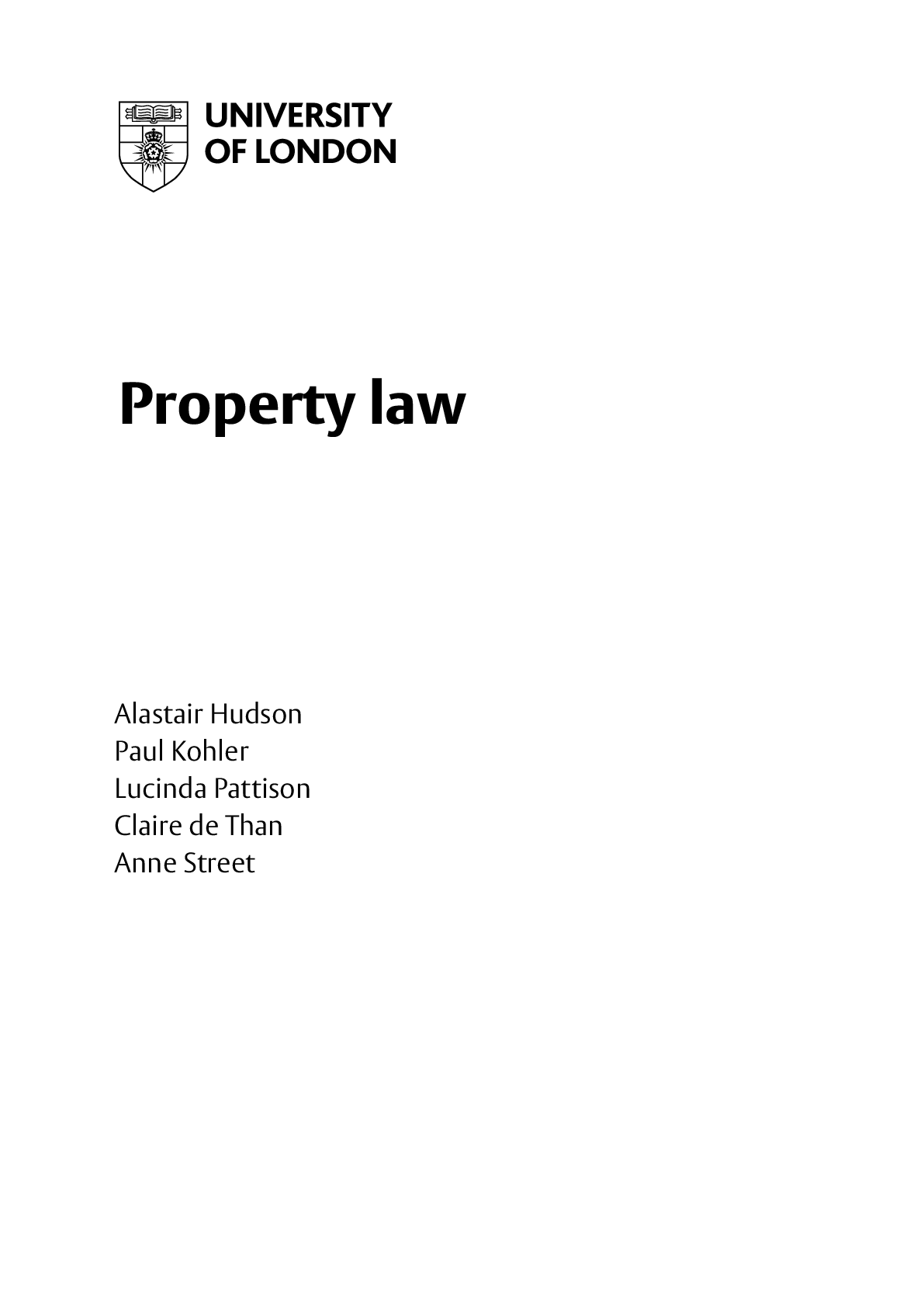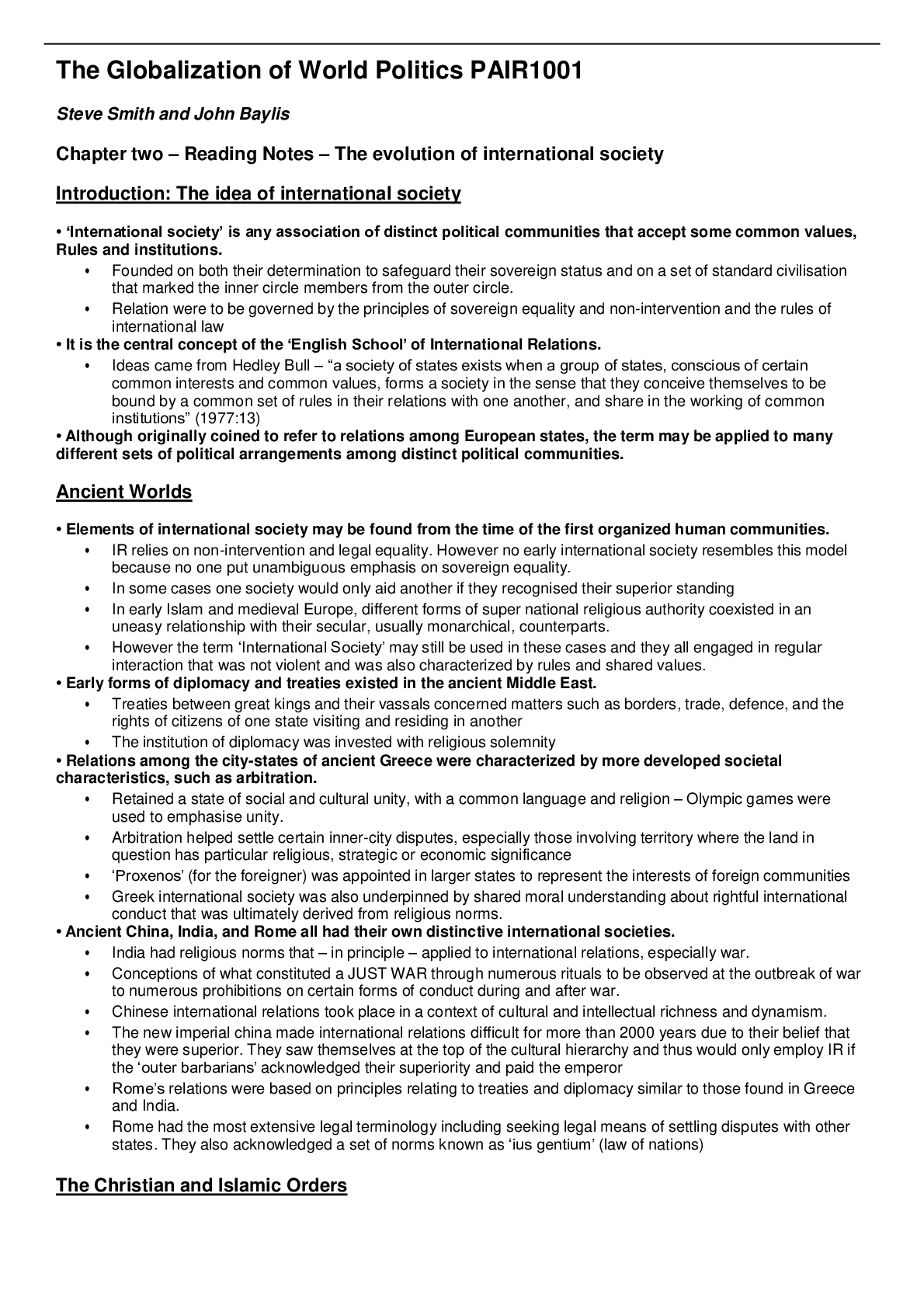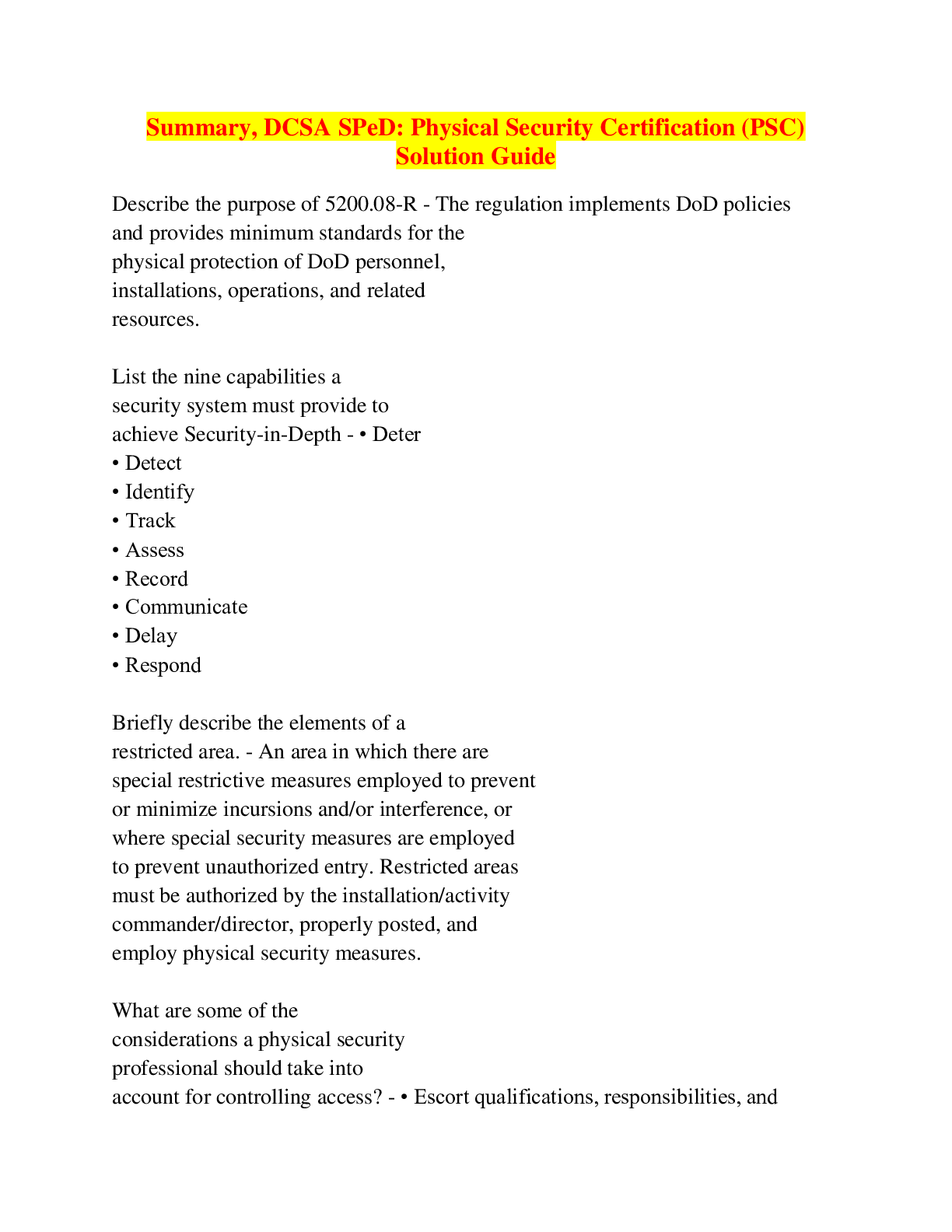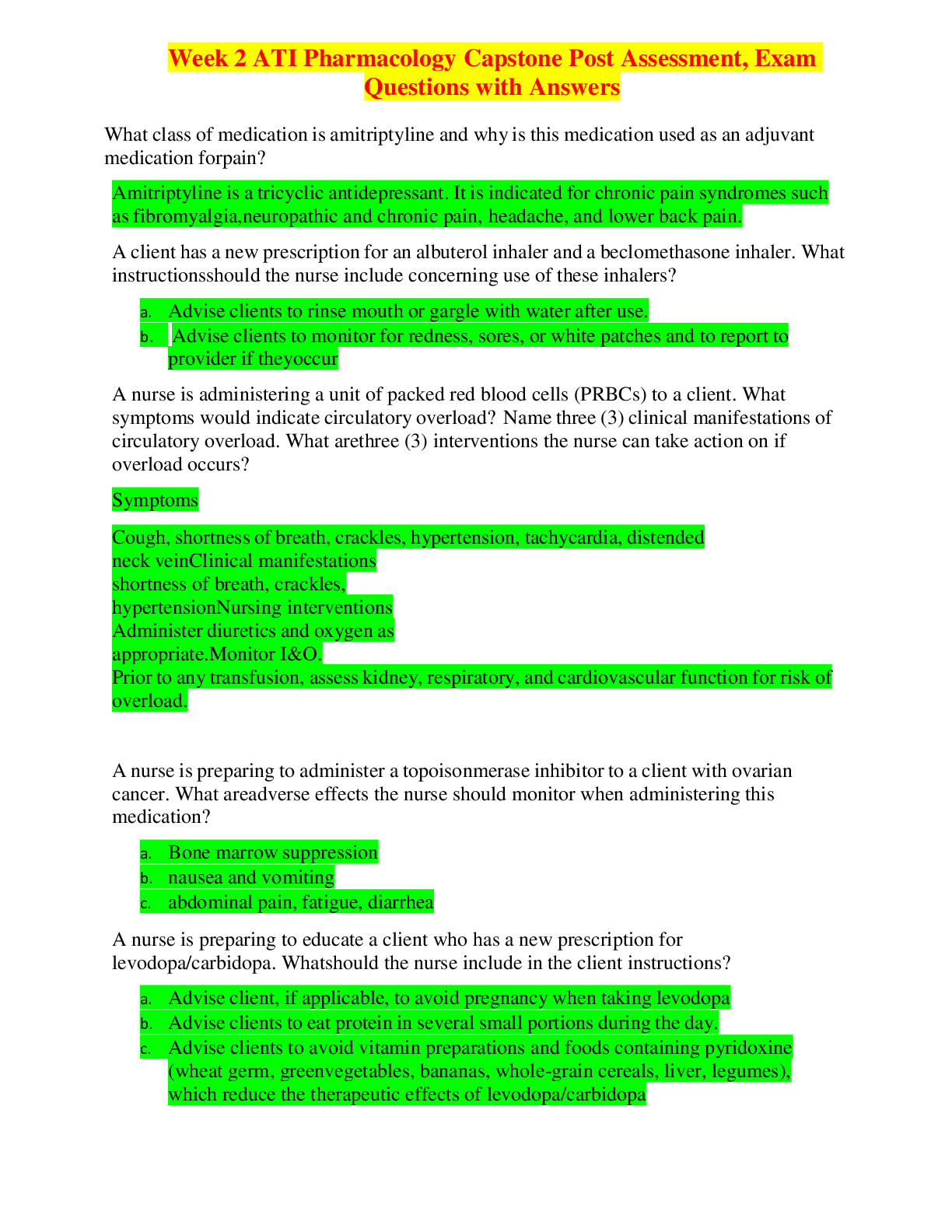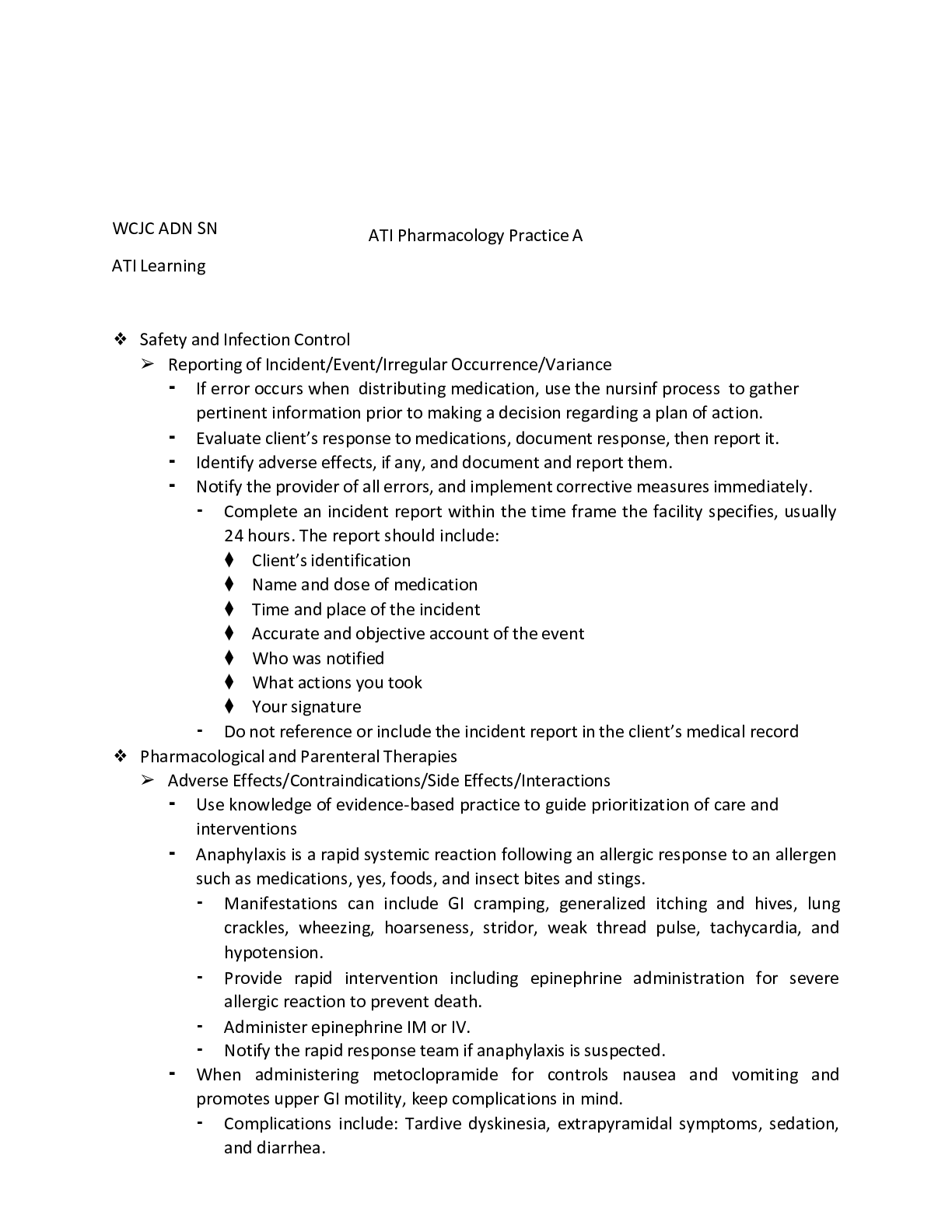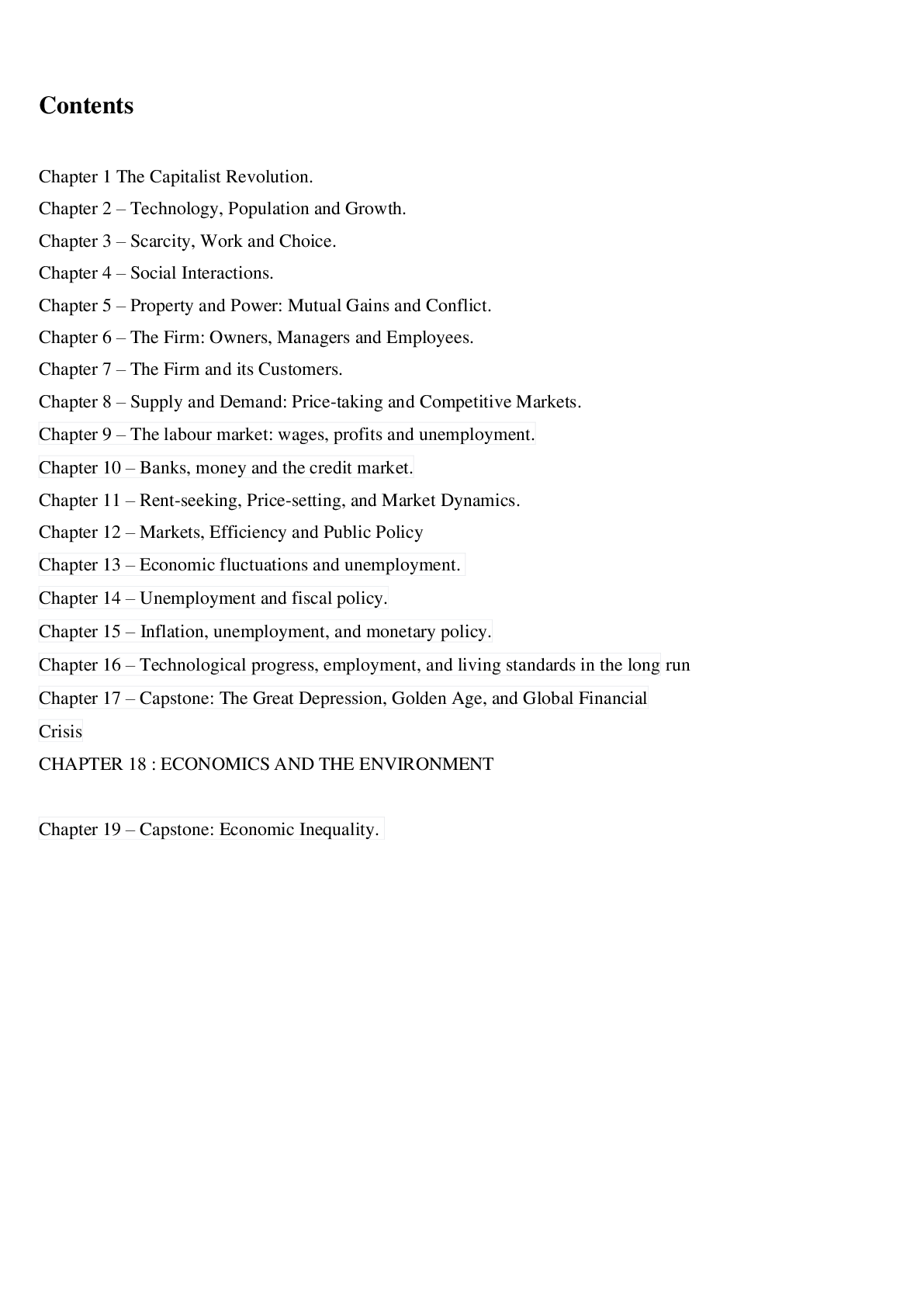(Chapter Review) Chapter 33 - Diabetes (Questions & Answers Review)
Document Content and Description Below
Type 1 diabetes results from autoimmune destruction of the beta cells. Eighty-five to 90% of type 1 diabetics have: 1. Autoantibodies to two tyrosine phosphatases 2. Mutation of the hepatic transcri ... ption factor on chromosome 12 3. A defective glucokinase molecule due to a defective gene on chromosome 7p 4. Mutation of the insulin promoter factor Diagnostic criteria for diabetes include: 1. Fasting blood glucose greater than 140 mg/dl on two occasions 2. Postprandial blood glucose greater than 140 mg/dl 3. Fasting blood glucose 100 to 125 mg/dl on two occasions 4. Symptoms of diabetes plus a casual blood glucose greater than 200 mg/dl Routine screening of asymptomatic adults for diabetes is appropriate for: 1. Individuals who are older than 45 and have a BMI of less than 25 kg/m2 2. Native Americans, African Americans, and Hispanics 3. Persons with HDL cholesterol greater than 100 mg/dl 4. Persons with prediabetes confirmed on at least two occasions Screening for children who meet the following criteria should begin at age 10 and occur every 3 years thereafter: 1. BMI above the 85th percentile for age and sex 2. Family history of diabetes in first- or second-degree relative 3. Hypertension based on criteria for children 4. Any of the above Insulin is used to treat both types of diabetes. It acts by: 1. Increasing beta cell response to low blood-glucose levels 2. Stimulating hepatic glucose production 3. Increasing peripheral glucose uptake by skeletal muscle and fat 4. Improving the circulation of free fatty acids Adam has type 1 diabetes and plays tennis for his university. He exhibits a knowledge deficit about his insulin and his diagnosis. He should be taught that: 1. He should increase his carbohydrate intake during times of exercise. 2. Each brand of insulin is equal in bioavailability, so buy the least expensive. 3. Alcohol produces hypoglycemia and can help control his diabetes when taken in small amounts. 4. If he does not want to learn to give himself injections, he may substitute an oral hypoglycemic to control his diabetes. Insulin preparations are divided into categories based on onset, duration, and intensity of action following subcutaneous injection. Which of the following insulin preparations has the shortest onset and duration of action? 1. Lispro 2. Glulisine 3. Glargine 4. Detemir The drug of choice for type 2 diabetics is metformin. Metformin: 1. Decreases glycogenolysis by the liver 2. Increases the release of insulin from beta cells 3. Increases intestinal uptake of glucose 4. Prevents weight gain associated with hyperglycemia Sulfonylureas may be added to a treatment regimen for type 2 diabetics when lifestyle modifications and metformin are insufficient to achieve target glucose levels. Sulfonylureas have been moved to Step 2 therapy because they: 1. Increase endogenous insulin secretion 2. Have a significant risk for hypoglycemia 3. Address the insulin resistance found in type 2 diabetics 4. Improve insulin binding to receptors Dipeptidyl peptidase-4 inhibitors (gliptins) act on the incretin system to improve glycemic control. Advantages of these drugs include: 1. Better reduction in glucose levels than other classes 2. Less weight gain than sulfonylureas 3. Low risk for hypoglycemia 4. Can be given twice daily Control targets for patients with diabetes include: 1. HbA1C between 7 and 8 2. Fasting blood glucose levels between 100 and 120 mg/dl 3. Blood pressure less than 130/80 mm Hg 4. LDL lipids less than 130 mg/dl Establishing glycemic targets is the first step in treatment of both types of diabetes. For type 1 diabetes: 1. Tight control/intensive therapy can be given to adults who are willing to test their blood glucose at least twice daily. 2. Tight control is acceptable for older adults if they are without complications. 3. Plasma glucose levels are the same for children as adults. 4. Conventional therapy has a fasting plasma glucose target between 120 and 150 mg/dl. Treatment with insulin for type 1 diabetics: 1. Starts with a total daily dose of 0.2 to 0.4 units per kg of body weight 2. Divides the total doses into three injections based on meal size 3. Uses a total daily dose of insulin glargine given once daily with no other insulin required 4. Is based on the level of blood glucose When the total daily insulin dose is split and given twice daily, which of the following rules may be followed? 1. Give two-thirds of the total dose in the morning and one-third in the evening. 2. Give 0.3 units per kg of premixed 70/30 insulin with one-third in the morning and two-thirds in the evening. 3. Give 50% of an insulin glargine dose in the morning and 50% in the evening. 4. Give long-acting insulin in the morning and short-acting insulin at bedtime. Studies have shown that control targets that reduce the HbA1C to less than 7% are associated with fewer long-term complications of diabetes. Patients who should have such a target include: 1. Those with long-standing diabetes 2. Older adults 3. Those with no significant cardiovascular disease 4. Young children who are early in their disease Prevention of conversion from prediabetes to diabetes in young children must take highest priority and should focus on: 1. Aggressive dietary manipulation to prevent obesity 2. Fostering LDL levels less than 100 mg/dl and total cholesterol less than 170 mg/dl to prevent cardiovascular disease 3. Maintaining a blood pressure that is less than 80% based on weight and height to prevent hypertension 4. All of the above The drugs recommended by the American Academy of Pediatrics for use in children with diabetes (depending upon type of diabetes) are: 1. Metformin and insulin 2. Sulfonylureas and insulin glargine 3. Split-mixed dose insulin and GPL-1 agonists 4. Biguanides and insulin lispro Unlike most type 2 diabetics where obesity is a major issue, older adults with low body weight have higher risks for morbidity and mortality. The most reliable indicator of poor nutritional status in older adults is: 1. Weight loss in previously overweight persons 2. Involuntary loss of 10% of body weight in less than 6 months 3. Decline in lean body mass over a 12-month period 4. Increase in central versus peripheral body adiposity The drugs recommended for older adults with type 2 diabetes include: 1. Second-generation sulfonylureas 2. Metformin 3. Pioglitazone 4. Third-generation sulfonylureas Ethnic groups differ in their risk for and presentation of diabetes. Hispanics: 1. Have a high incidence of obesity, elevated triglycerides, and hypertension 2. Do best with drugs that foster weight loss, such as metformin 3. Both 1 and 2 4. Neither 1 nor 2 The American Heart Association states that people with diabetes have a 2- to 4-fold increase in the risk of dying from cardiovascular disease. Treatments and targets that do not appear to decrease risk for micro- and macro-vascular complications include: 1. Glycemic targets between 7% and 7.5% 2. Use of insulin in type 2 diabetics 3. Control of hypertension and hyperlipidemia 4. Stopping smoking All diabetic patients with known cardiovascular disease should be treated with: 1. Beta blockers to prevent MIs 2. Angiotensin-converting enzyme inhibitors and aspirin to reduce risk of cardiovascular events 3. Sulfonylureas to decrease cardiovascular mortality 4. Pioglitazone to decrease atherosclerotic plaque buildup All diabetic patients with hyperlipidemia should be treated with: 1. HMG-CoA reductase inhibitors 2. Fibric acid derivatives 3. Nicotinic acid 4. Colestipol Both angiotensin converting enzyme inhibitors and some angiotensin II receptor blockers have been approved in treating: 1. Hypertension in diabetic patients 2. Diabetic nephropathy 3. Both 1 and 2 4. Neither 1 nor 2 Diabetic autonomic neuropathy (DAN) is the earliest and most common complication of diabetes. Symptoms associated with DAN include: 1. Resting tachycardia, exercise intolerance, and orthostatic hypotension 2. Gastroparesis, cold intolerance, and moist skin 3. Hyperglycemia, erectile dysfunction, and deficiency of free fatty acids 4. Pain, loss of sensation, and muscle weakness The American Diabetic Association has recommended which of the following tests for ongoing management of diabetes? 1. Fasting blood glucose 2. HbA1C 3. Thyroid function tests 4. Electrocardiograms Allison is an 18-year-old college student with type 1 diabetes. She is on NPH twice daily and Novolog before meals. She usually walks for 40 minutes each evening as part of her exercise regimen. She is beginning a 30-minute swimming class three times a week at 1 p.m. What is important for her to do with this change in routine? 1. Delay eating the midday meal until after the swimming class. 2. Increase the morning dose of NPH insulin on days of the swimming class. 3. Adjust the morning insulin injection so that the peak occurs while swimming. 4. Check glucose level before, during, and after swimming. Allison is an 18-year-old college student with type 1 diabetes. Allison's pre-meal BG at 11:30 a.m. is 130. She eats an apple and has a sugar-free soft drink. At 1 p.m. before swimming her BG is 80. What should she do? 1. Proceed with the swimming class. 2. Recheck her BG immediately. 3. Eat a granola bar or other snack with CHO. 4. Take an additional dose of insulin. Bart is a patient is a 67-year-old male with T2 DM. He is on glipizide and metformin. He presents to the clinic with confusion, sluggishness, and extreme thirst. His wife tells you Bart does not follow his meal plan or exercise regularly, and hasn't checked his BG for 1 week. A random glucose is drawn and it is 500. What is a likely diagnosis based on preliminary assessment? 1. Diabetic keto acidosis (DKA) 2. Hyperglycemic hyperosmolar syndrome (HHS) 3. Infection 4. Hypoglycemia What would one expected assessment finding be for hyperglycemic hyperosmolar syndrome? 1. Low hemoglobin 2. Ketones in the urine 3. Deep, labored breathing 4. pH of 7.35 A patient on metformin and glipizide arrives at her 11:30 a.m. clinic appointment diaphoretic and dizzy. She reports taking her medication this morning and ate a bagel and coffee for breakfast. BP is 110/70 and random finger-stick glucose is 64. How should this patient be treated? 1. 12 oz apple juice with 1 tsp sugar 2. 10 oz diet soda 3. 8 oz milk or 4 oz orange juice 4. 4 cookies and 8 oz chocolate milk [Show More]
Last updated: 2 years ago
Preview 1 out of 6 pages
 Chapter 33 - Diabetes (Q&A).png)
Buy this document to get the full access instantly
Instant Download Access after purchase
Buy NowInstant download
We Accept:

Reviews( 0 )
$13.00
Can't find what you want? Try our AI powered Search
Document information
Connected school, study & course
About the document
Uploaded On
Jan 17, 2023
Number of pages
6
Written in
All
Additional information
This document has been written for:
Uploaded
Jan 17, 2023
Downloads
0
Views
106

.png)



 Chapter 2 - Application of Pharmacology.png)
 Chapter 12 - Mental Health Schizophrenia Spectrum Disorders.png)
 Chapter 13 - Bipolar and Related Disorders.png)
 Chapter 22 - Substance-Related and Addictive Disorders [Varcarolis].png)
.png)
.png)



